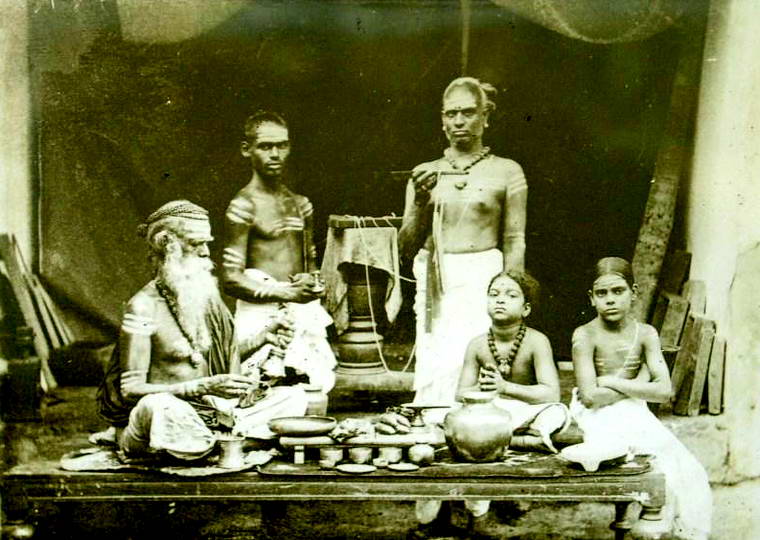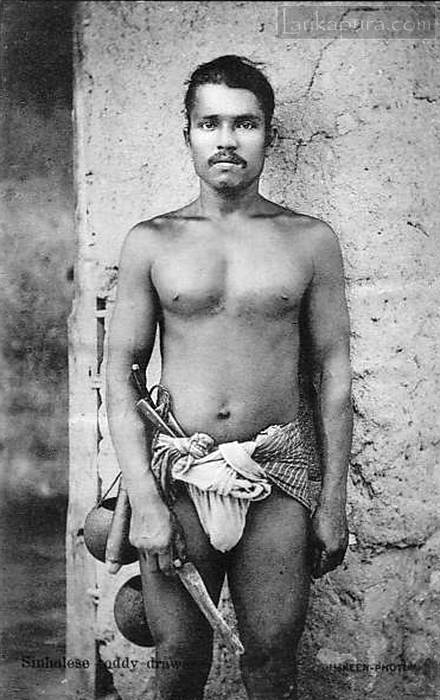
Dwelling of Buddhist priests, Ceylon
Photographer: Fiebig, Frederick
Medium: Photographic print (handcoloured salt prints)
Date: 1852
Photograph by Frederick Fiebig from an album of 70 handcoloured salt prints, showing dwellings of Buddhist priests in Sri Lanka (Ceylon).
The national identity and culture of Sri Lanka has been shaped by Theravada Buddhism, practised by its native Sinhalese. Sri Lanka has the longest continuous Buddhist history in the world. Buddhism was introduced here in the 3rd century BC by a mission sent by the great Indian emperor Asoka, led by his son Mahinda. It was in Sri Lanka that the Theravada canon, previously orally transmitted, was written down by monks in the 1st century BC, forming the sacred texts known as Tipitaka. A branch of the bodhi tree under which the Buddha attained enlightenment was brought here by Mahinda’s sister, the nun Sanghamitta, and the tree descended from it is still venerated in its shrine at Anuradhapura.

